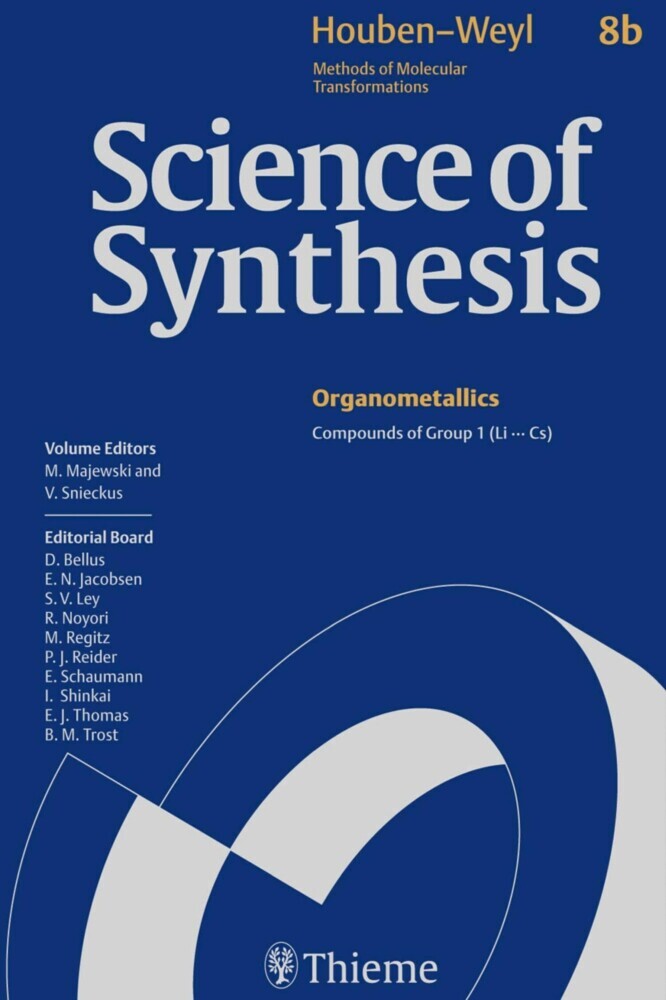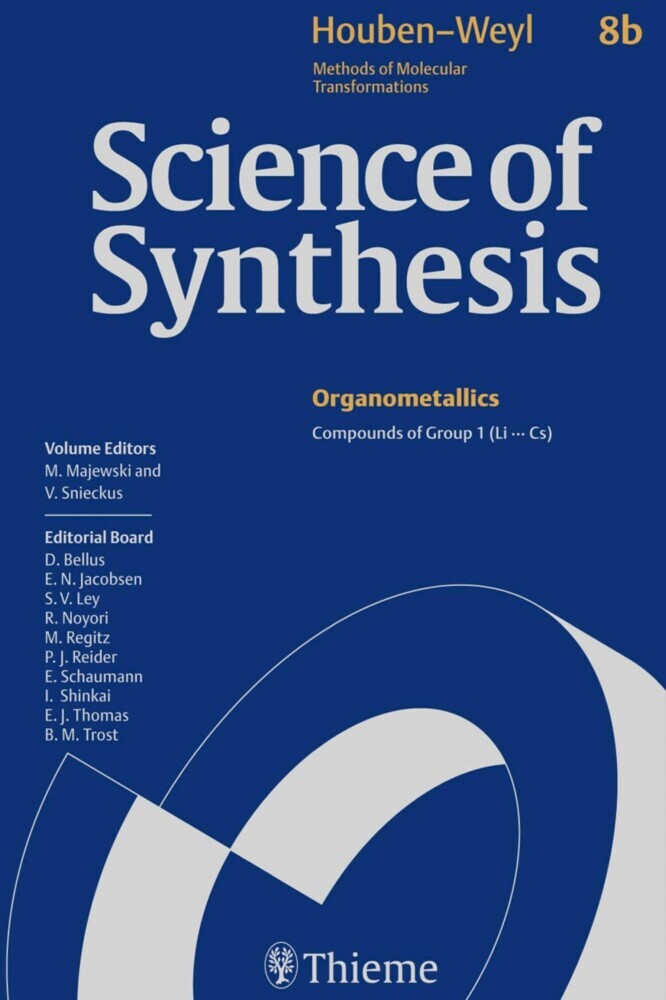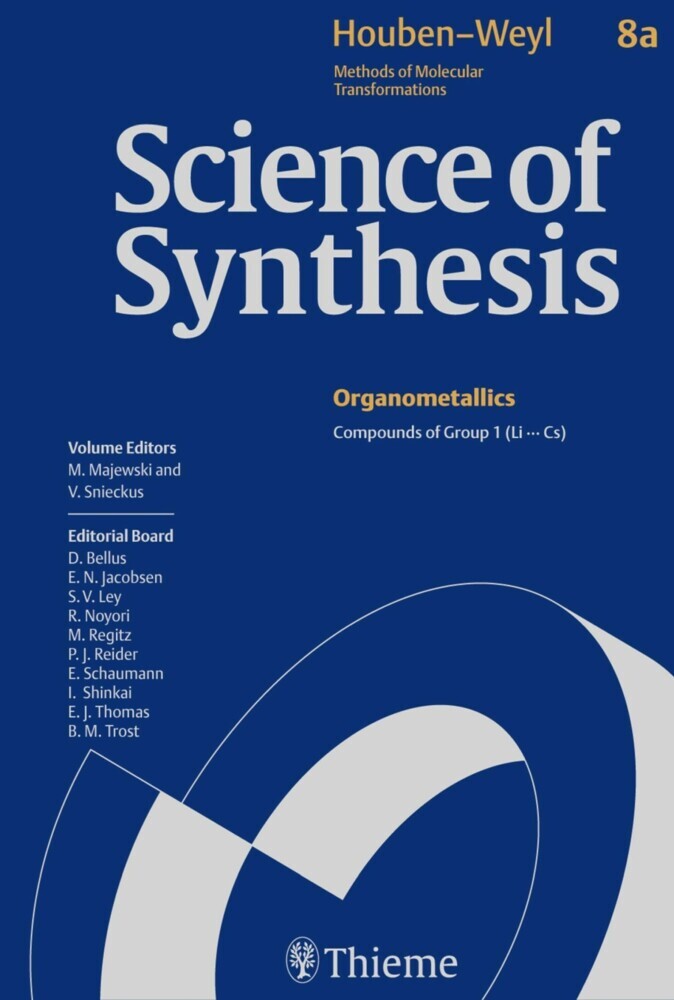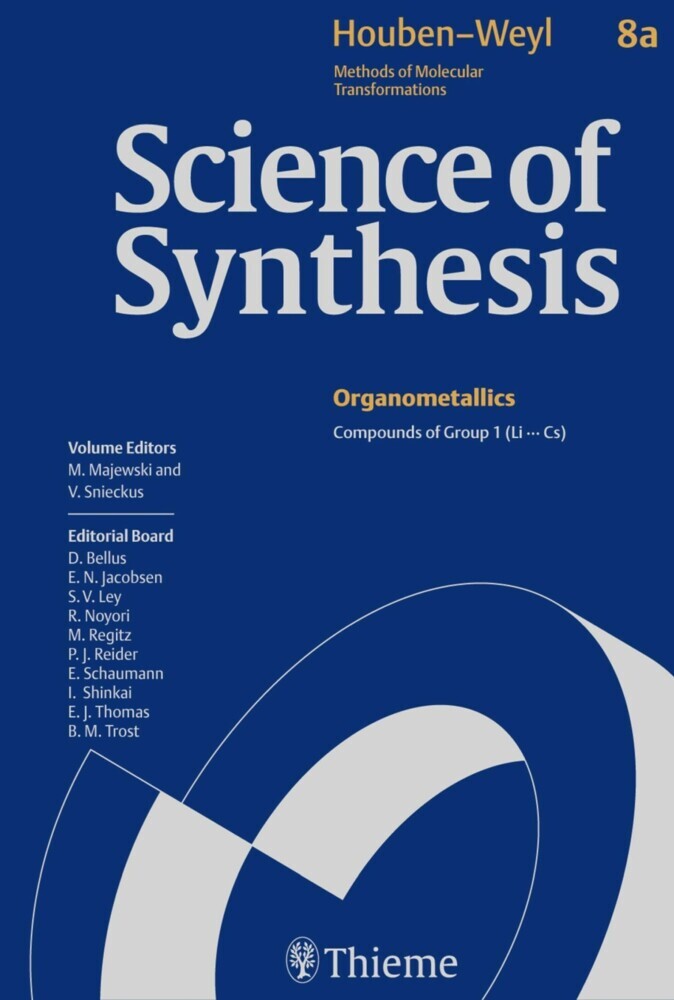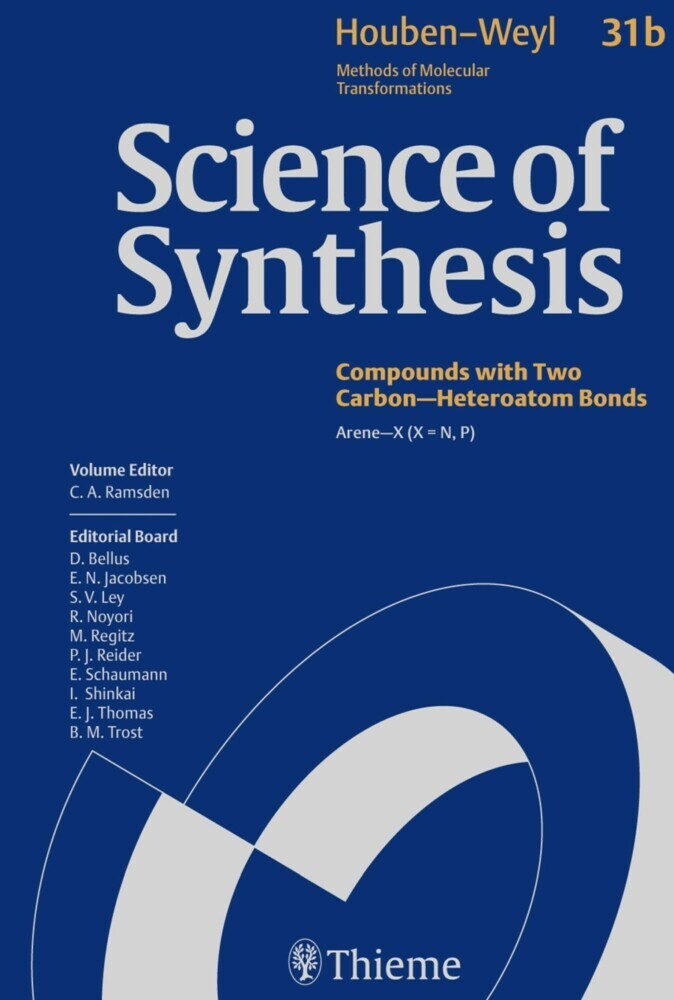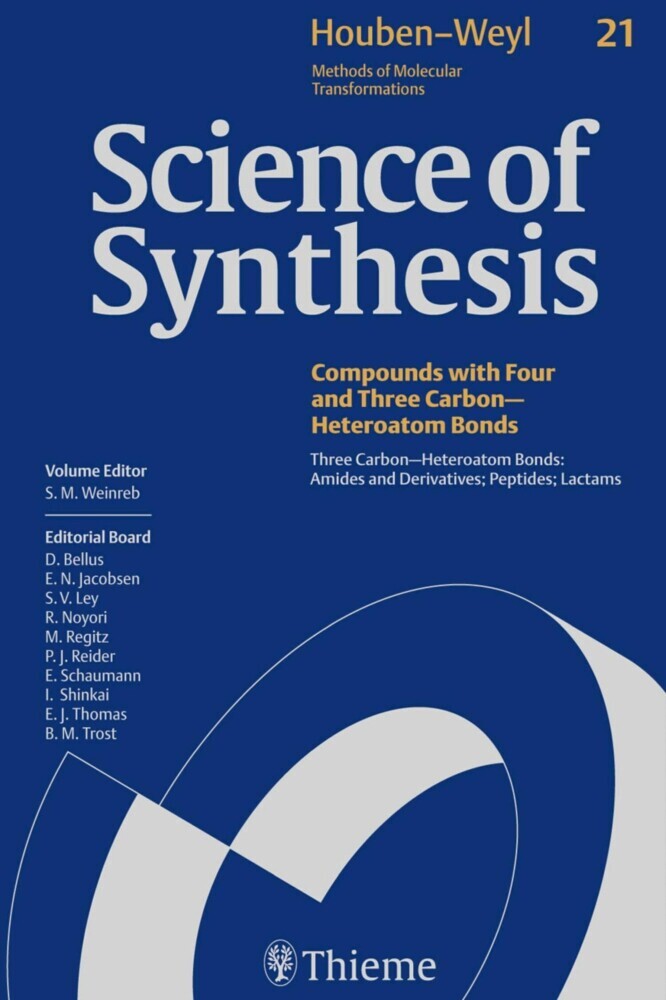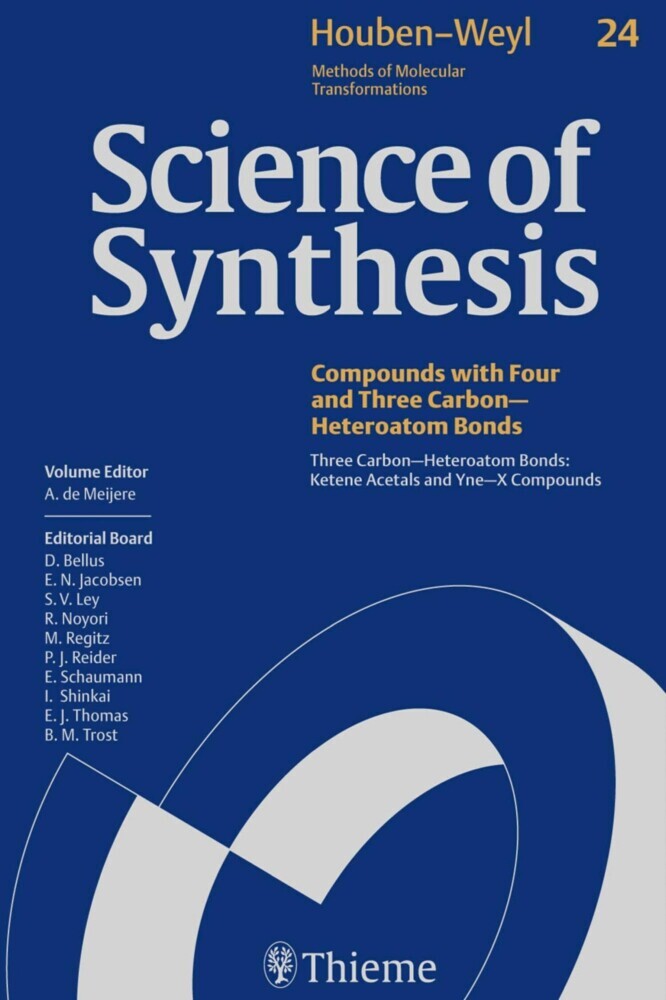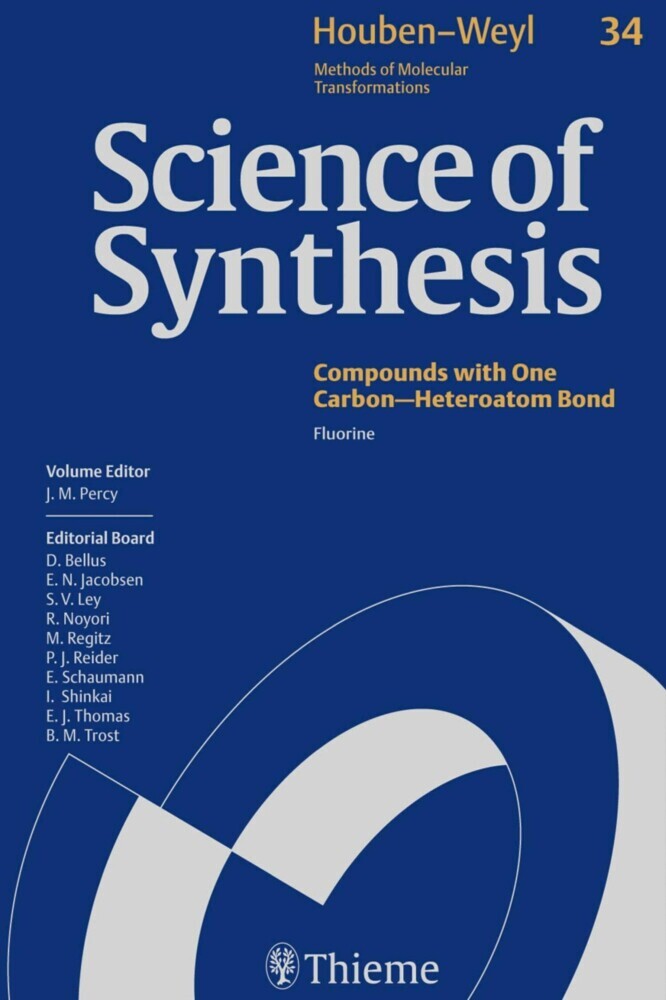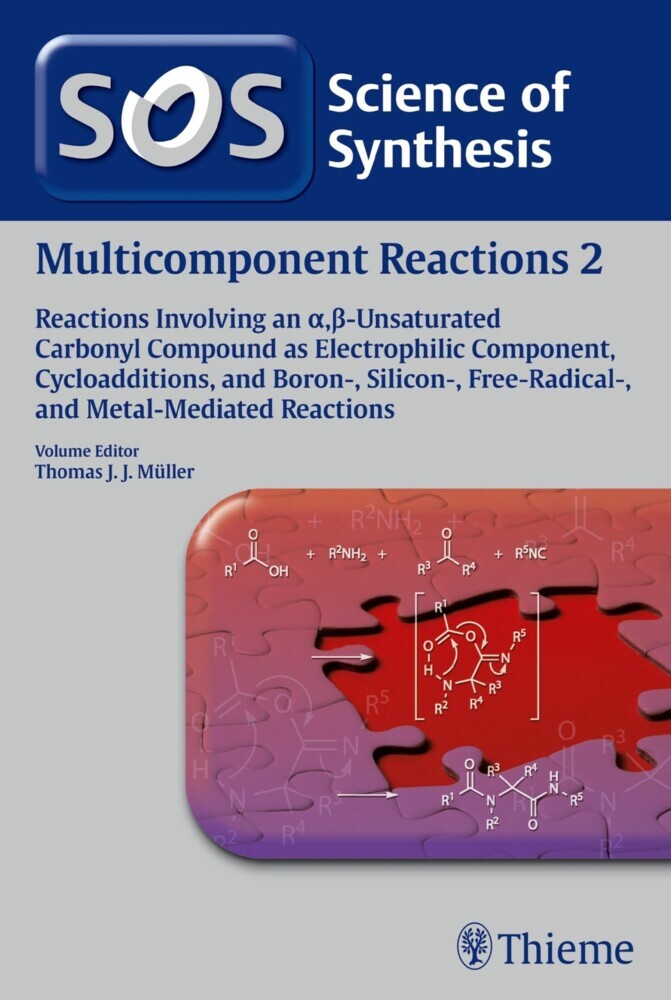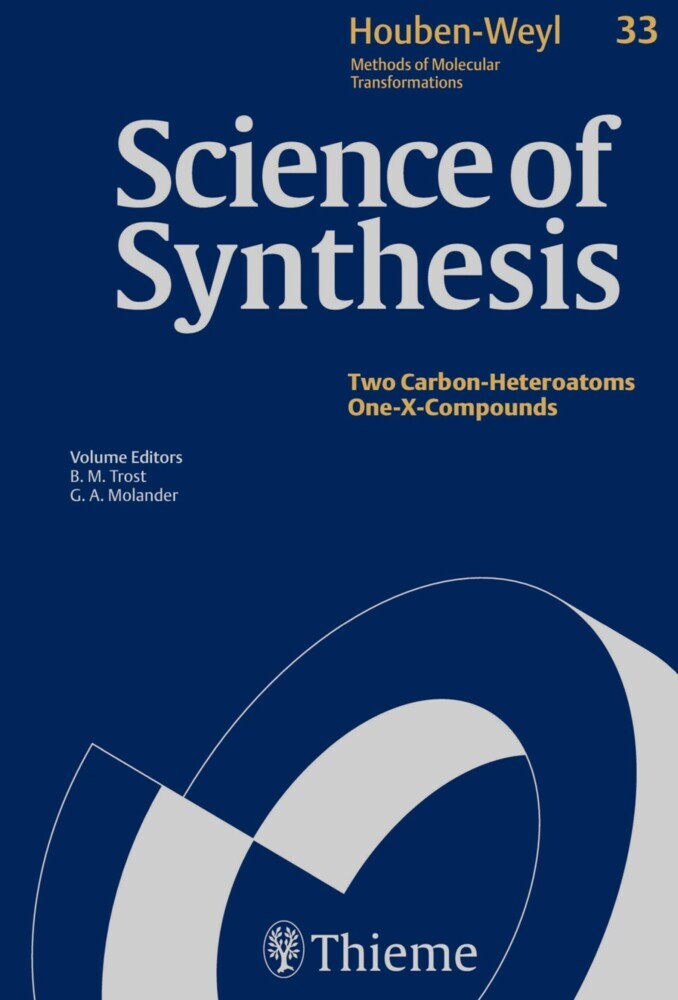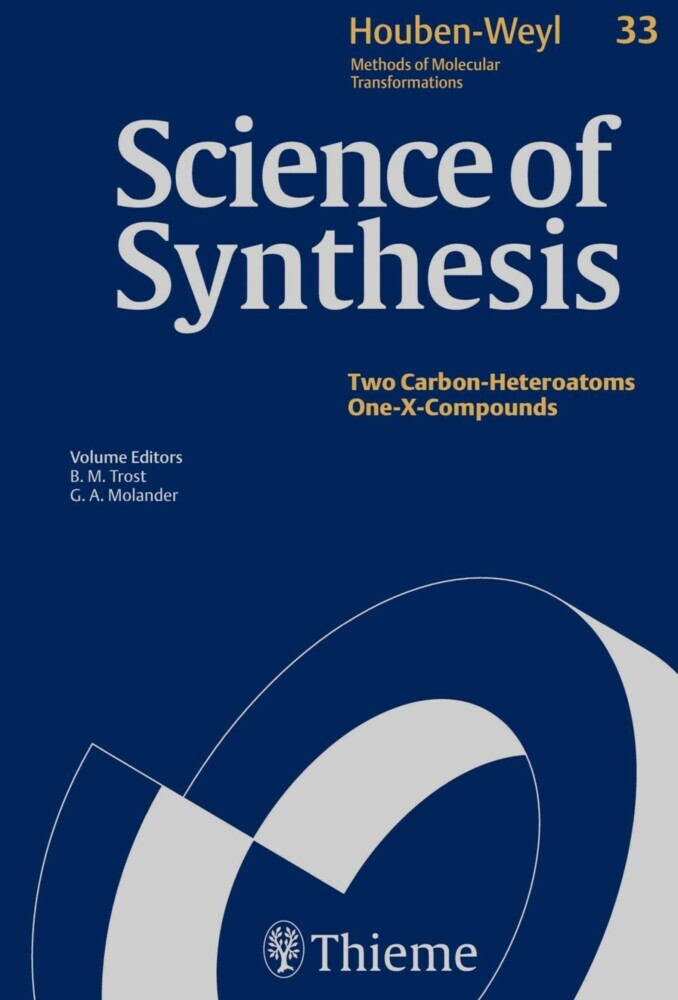Science of Synthesis: Houben-Weyl Methods of Molecular Transformations Vol. 8b
Compounds of Group 1 (Li...Cs)
Science of Synthesis: Houben-Weyl Methods of Molecular Transformations Vol. 8b
Compounds of Group 1 (Li...Cs)
Science of Synthesis: Houben-Weyl Methods of Molecular Transformations is the entirely new edition of the acclaimed reference series Houben-Weyl, the standard synthetic chemistry resource since 1909. This new edition is published in English and will comprise 48 volumes published between the years 2000 and 2008.
Science of Synthesis is a quality reference work developed by a highly esteemed editorial board to provide a comprehensive and critical selection of reliable organic and organometallic synthetic methods. This unique resource is designed to be the first point of reference when searching for a synthesis strategy.
- Contains the expertise of presently 400 leading chemists worldwide
- Critically evaluates the preparative applicability and significance of the synthetic methods
- Discusses relevant background information and provides detailed experimental procedures
For full information on the Science of Synthesis series, visit the Science of Synthesis Homepage
1;Science of Synthesis - Volume 8b: Compounds of Group 1 (Li...Cs);1 1.1;Title page;3 1.2;Imprint;5 1.3;Preface;6 1.4;Overview;12 1.5;Table of Contents;16 1.6;Introduction;38 1.7;8.2 Product Class 2: Sodium Compounds;54 1.7.1;8.2.1 Product Subclass 1: Sodium Metal and Sodium--Potassium Alloy;56 1.7.1.1;Applications of Product Subclass 1 in Organic Synthesis;56 1.7.1.1.1;8.2.1.1 Method 1: Reduction of Carbon--Heteroatom Multiple Bonds;56 1.7.1.1.1.1;8.2.1.1.1 Variation 1: Ketone Reduction in Protic Conditions;57 1.7.1.1.1.2;8.2.1.1.2 Variation 2: Ketone Reduction in Liquid Ammonia;58 1.7.1.1.1.3;8.2.1.1.3 Variation 3: Bimolecular Reduction of Carbonyl Groups (Pinacol Coupling);58 1.7.1.1.1.4;8.2.1.1.4 Variation 4: Reduction of Esters;59 1.7.1.1.1.5;8.2.1.1.5 Variation 5: Reduction of Amides;60 1.7.1.1.1.6;8.2.1.1.6 Variation 6: Reduction of Enones;61 1.7.1.1.1.7;8.2.1.1.7 Variation 7: Reduction of Nitriles;62 1.7.1.1.1.8;8.2.1.1.8 Variation 8: Reduction of 1,3-Diimines;62 1.7.1.1.2;8.2.1.2 Method 2: Reduction of C--C Multiple Bonds;62 1.7.1.1.2.1;8.2.1.2.1 Variation 1: Hydrogenation of C==C Bonds;62 1.7.1.1.2.2;8.2.1.2.2 Variation 2: Hydrogenation of Alkynes;64 1.7.1.1.3;8.2.1.3 Method 3: Reduction of Carbon--Heteroatom Single Bonds;64 1.7.1.1.3.1;8.2.1.3.1 Variation 1: Dehalogenation of Alkyl Halides;64 1.7.1.1.3.2;8.2.1.3.2 Variation 2: Cleavage of Esters and Ethers;65 1.7.1.1.3.3;8.2.1.3.3 Variation 3: Cleavage of C--S Bonds;66 1.7.1.1.4;8.2.1.4 Method 4: Reduction of C--C Single Bonds;67 1.7.1.1.4.1;8.2.1.4.1 Variation 1: Decyanation;67 1.7.2;8.2.2 Product Subclass 2: Sodium Hydride;70 1.7.2.1;Synthesis of Product Subclass 2;70 1.7.2.1.1;8.2.2.1 Method 1: Preparation of Sodium Hydride;70 1.7.2.2;Applications of Product Subclass 2 in Organic Synthesis;71 1.7.2.2.1;8.2.2.2 Method 2: Metalation of the Hydroxy Group;71 1.7.2.2.1.1;8.2.2.2.1 Variation 1: Etherification in the Presence of 15-Crown-5;71 1.7.2.2.1.2;8.2.2.2.2 Variation 2: Etherification with Superactive Sodium Hydride;72 1.7.2.2.1.3;8.2.2.2.3 Variation 3: Etherification on Solid Support;72 1.7.2.2.1.4;8.2.2.2.4 Variation 4: Base-Promoted Cyclization of Hydroxy Propargylic Sulfones;73 1.7.2.2.1.5;8.2.2.2.5 Variation 5: Formation of Highly Substituted Diphenyl Carbonates;74 1.7.2.2.2;8.2.2.3 Method 3: Alkylation of Amines and Amides;75 1.7.2.2.2.1;8.2.2.3.1 Variation 1: Transformation of Dihydroimidazoles into 2,4,6-Trisubstituted Pyrimidines;76 1.7.2.2.3;8.2.2.4 Method 4: Metalation of C--H Groups;77 1.7.2.2.3.1;8.2.2.4.1 Variation 1: Trapping of a-Lactams by Weak Nuclephiles;77 1.7.2.2.3.2;8.2.2.4.2 Variation 2: Synthesis of Ylides;78 1.7.2.2.3.3;8.2.2.4.3 Variation 3: Base-Promoted Cyclization of Alkynones;80 1.7.2.2.3.4;8.2.2.4.4 Variation 4: Dieckmann Condensation;80 1.7.2.2.3.5;8.2.2.4.5 Variation 5: The Darzens Reaction;81 1.7.2.2.3.6;8.2.2.4.6 Variation 6: Synthesis of .-Oxo Acids;81 1.7.2.2.3.7;8.2.2.4.7 Variation 7: Synthesis of 1,3-Diketones;82 1.7.2.2.3.8;8.2.2.4.8 Variation 8: Tandem Michael--Dieckmann Synthesis of Carbocycles;83 1.7.2.2.3.9;8.2.2.4.9 Variation 9: Double Annulation Leading to Fused Bicyclic Compounds;83 1.7.2.2.3.10;8.2.2.4.10 Variation 10: a-Alkylation of Sulfones;84 1.7.2.2.3.11;8.2.2.4.11 Variation 11: Regiocontrolled Synthetic Approach to Unsymmetrical Ketones;85 1.7.2.2.3.12;8.2.2.4.12 Variation 12: Allylation of Alkenylidenemalonate;86 1.7.2.2.3.13;8.2.2.4.13 Variation 13: Base-Induced Cycloaddition;87 1.7.2.2.3.14;8.2.2.4.14 Variation 14: Asymmetric Addition of Malonate Nucleophiles;87 1.7.2.2.3.15;8.2.2.4.15 Variation 15: Cyclization of Phenylacetonitriles;88 1.7.2.2.4;8.2.2.5 Method 5: Reduction of Carbon--Heteroatom Multiple Bonds;89 1.7.2.2.4.1;8.2.2.5.1 Variation 1: Reduction of Tosylhydrazones;89 1.7.2.2.4.2;8.2.2.5.2 Variation 2: Reduction Using Metal-Containing Complex Reducing Agents;89 1.7.2.2.5;8.2.2.6 Method 6: Reduction of C--C Multiple Bonds;92 1.7.2.2.6;8.2.2.7 Meth
Abu-Hasanayn, Faraj
Majewski, Marek
| ISBN | 9783131717917 |
|---|---|
| Artikelnummer | 9783131717917 |
| Medientyp | E-Book - PDF |
| Copyrightjahr | 2014 |
| Verlag | Georg Thieme Verlag KG |
| Umfang | 753 Seiten |
| Sprache | Englisch |
| Kopierschutz | Digitales Wasserzeichen |

